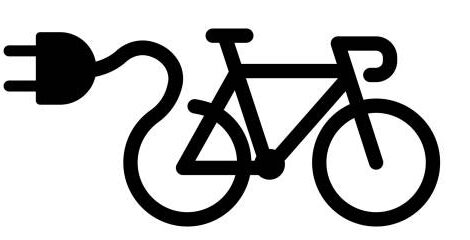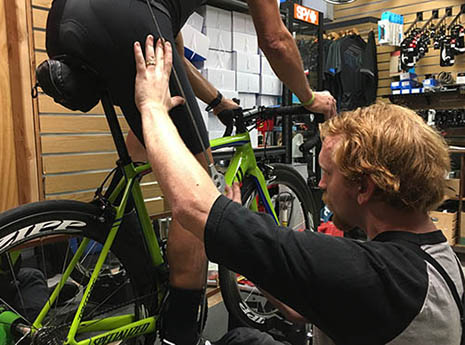Understanding the Causes of Numbness When Hands Get Numb Riding Bike
Numbness in the hands while cycling is a common complaint, stemming from several factors. Poor posture plays a significant role. Hunching over the handlebars compresses nerves and restricts blood flow to the hands, leading to that uncomfortable tingling sensation. Insufficient blood flow, often exacerbated by prolonged periods in one position, deprives the hands of necessary oxygen and nutrients, causing numbness. Nerve compression, particularly in the wrists and hands, is another culprit. Repetitive strain injuries (RSIs), resulting from the repetitive movements of cycling, can also contribute to numbness. Different cycling positions significantly impact this. Aggressive aero positions, for example, often place more pressure on the hands and wrists than a more upright posture. The importance of a proper bike setup cannot be overstated; a poorly fitted bike increases the likelihood of hands getting numb riding bike.
Specific types of cycling positions can significantly affect the occurrence of hand numbness. Road cycling positions, especially aggressive aero positions, tend to place more pressure on the hands and wrists than more upright mountain biking styles. Similarly, the type of handlebars used—drop bars versus flat bars—influences hand position and pressure points. Long rides, especially those involving prolonged periods of constant pressure, increase the chance of experiencing numbness. This is directly related to the reduced blood circulation in the hands. Understanding these factors is crucial in identifying the source of the problem. By addressing poor posture and other contributing factors, cyclists can greatly reduce the incidence of hands getting numb riding bike. A comprehensive understanding of how posture and bike fit directly influence comfort and circulation is essential for prevention.
Analyzing individual riding styles reveals further contributing factors. Overly tight grips, improper handlebar reach, and inadequate saddle height all contribute to poor posture and increased pressure on the hands and wrists. These factors combine to reduce blood flow, resulting in numbness. Furthermore, underlying medical conditions such as carpal tunnel syndrome can be aggravated by cycling, leading to increased numbness. Therefore, a holistic approach, involving proper bike fitting, posture correction, and potentially medical evaluation, is necessary to address this issue effectively. Regularly assessing posture during rides can help identify and correct poor habits before they lead to persistent numbness and discomfort. Addressing these factors comprehensively reduces the likelihood of experiencing hands getting numb riding bike.
The Role of Proper Bike Fit
A properly fitted bike is crucial for comfort and preventing hand numbness while cycling. Many cyclists experience hands get numb riding bike due to improper bike setup. An ill-fitting bike forces the body into awkward positions, increasing pressure on nerves and restricting blood flow to the hands. This can lead to discomfort and numbness, even pain. A qualified bike fitter can assess your individual body measurements and riding style to create a customized setup.
Adjusting saddle height significantly impacts posture and pressure points. A saddle that’s too high or too low forces you to compensate, leading to excessive strain on your hands and wrists. Similarly, handlebar position and stem length directly affect upper body posture. Handlebars that are too low or too far away can cause hunching, leading to nerve compression and reduced blood flow, causing hands get numb riding bike. A professional bike fitter will help optimize these components to promote a neutral spine and relaxed upper body posture. This is critical to alleviating pressure on the hands and preventing numbness. They can also advise on appropriate handlebar width and reach for optimal comfort.
Ignoring proper bike fit can have significant long-term consequences. Persistent numbness can indicate more serious underlying conditions. Investing in a professional bike fit is an investment in your cycling enjoyment and health. It helps to prevent discomfort and potential injuries. Remember, a well-fitted bike is a fundamental component of enjoyable and pain-free cycling. Regularly review your bike fit as your body changes or your riding style evolves. Even small adjustments can make a big difference in preventing hands get numb riding bike and other related issues.
Evaluating Cycling Posture: Key to Preventing Numb Hands
Maintaining proper cycling posture is crucial for preventing discomfort and numbness in the hands. A neutral spine is essential. Avoid hunching or excessive leaning. This prevents undue pressure on nerves and blood vessels in the hands and wrists. Imagine a straight line from your head, through your shoulders, and down to your hips. This alignment minimizes strain. When hands get numb riding bike, posture is often the culprit. A slumped posture forces the weight onto the hands and wrists, restricting blood flow and compressing nerves.
Regularly assess your posture during rides. Consider using mirrors or asking a cycling partner for feedback. Even subtle adjustments can make a significant difference. Pay attention to your shoulders. Are they relaxed and down? Or are they raised towards your ears, creating tension? Tight shoulders often contribute to poor posture and subsequently, numb hands while cycling. Adjusting your handlebar height and reach can significantly impact posture. A handlebar that’s too low or too far away forces you into an uncomfortable, strained position. This can lead to pressure points and eventually cause hands to go numb. Cycling with a proper fit should make your body relaxed.
Visualize a comfortable, relaxed position on the bike. Your body should feel supported, with minimal strain on your wrists and hands. Regularly check your posture throughout the ride to ensure you are maintaining the correct alignment. The goal is to find a comfortable and sustainable position that promotes efficient power transfer without compromising circulation or putting pressure on nerves. Many cyclists who experience numb hands find relief by focusing on maintaining this neutral spine and relaxed upper body posture. Remember, even slight adjustments can prevent hands getting numb riding bike.
Addressing Blood Flow Issues and Why Hands Get Numb Riding Bike
Reduced blood flow to the hands is a common cause of numbness while cycling. Maintaining a tight grip for extended periods restricts blood circulation. The pressure on nerves and blood vessels in the hands and wrists further contributes to this problem. The duration of your ride also plays a role. Longer rides intensify the effects of restricted blood flow, increasing the likelihood of experiencing numbness. Hands get numb riding bike more frequently with prolonged periods of cycling. Cyclists may find their hands get numb riding bike due to poor circulation.
Several strategies can improve hand and wrist circulation during cycling. Regular breaks allow blood flow to return to normal. Simple hand exercises performed during rest stops can help restore circulation. Gently rotating your wrists, making fists, and spreading your fingers can make a difference. Staying adequately hydrated also supports good circulation throughout your body. Dehydration can thicken blood, impacting its flow. Consider the size and shape of your handlebar grips. Grips that are too small or have an uncomfortable shape can exacerbate pressure on nerves and blood vessels, reducing blood flow to the hands. Experiment with different grips to find what is most comfortable and promotes better circulation. Addressing these factors can significantly reduce the likelihood of experiencing numb hands during your rides.
Many cyclists find their hands get numb riding bike because of poor circulation. Therefore, understanding the relationship between hand position, riding time, and circulation is crucial. Active management of blood flow is essential for comfortable and injury-free cycling. By proactively addressing these issues, cyclists can significantly reduce the incidence of numbness and improve their overall riding experience. Regularly assess your grip, take frequent breaks, stay hydrated, and choose comfortable grips to minimize the likelihood of experiencing numbness. Cycling should be an enjoyable activity, and addressing these issues can help ensure it remains so. The goal is to prevent hands get numb riding bike. Remember that a proper bike fit also contributes to better circulation, minimizing pressure on the hands and wrists.
Assessing for Nerve Compression
Numbness in the hands while cycling can sometimes indicate nerve compression. Conditions like carpal tunnel syndrome, ulnar nerve entrapment, or cervical radiculopathy can be exacerbated by the repetitive movements and pressure points associated with riding a bike. These conditions cause tingling, numbness, or pain in the hands and fingers. Symptoms might worsen during or after a ride, especially long rides. If you experience persistent numbness or pain that extends beyond the hands, or if you notice weakness or muscle atrophy, seek medical attention immediately. A proper diagnosis is crucial to manage these conditions effectively. Ignoring these symptoms could lead to more severe problems. Remember, addressing nerve compression is important for those experiencing hands get numb riding bike.
Carpal tunnel syndrome, for instance, involves compression of the median nerve in the wrist. This can lead to numbness and tingling in the thumb, index, middle, and part of the ring finger. Ulnar nerve entrapment affects the ulnar nerve, causing numbness and tingling in the ring and little fingers. Cervical radiculopathy, stemming from a pinched nerve in the neck, can radiate numbness and pain down the arm and into the hand. These conditions are not solely caused by cycling, but cycling can certainly aggravate pre-existing issues or contribute to their development. Early intervention, including modifications to your bike fit and cycling posture, can be crucial in managing symptoms and preventing further problems. For many people who experience hands get numb riding bike, addressing nerve compression is a key step toward relief.
Proper bike fit plays a significant role in preventing nerve compression. Adjusting saddle height, handlebar position, and stem length can help optimize your posture and reduce pressure points on your wrists and hands. Maintaining a neutral spine and avoiding excessive forward leaning helps reduce strain on the nerves in your neck and arms. If you suspect nerve compression, consulting a physician or physical therapist is essential. They can conduct a thorough evaluation, provide a proper diagnosis, and recommend appropriate treatment options, such as physical therapy, splinting, or in some cases, surgery. Early detection and treatment are key to managing nerve compression effectively, ensuring comfort and enjoyment during cycling. Cycling shouldn’t have to mean that your hands get numb riding bike.
Managing Repetitive Strain Injuries
Repetitive hand movements during cycling, if not properly managed, can lead to repetitive strain injuries (RSIs). This is a common cause of why hands get numb riding bike. These injuries often manifest as pain, numbness, tingling, or weakness in the hands, wrists, and forearms. Ignoring these symptoms can worsen the condition. Early intervention is crucial.
To minimize the risk of RSIs, cyclists should consider several strategies. Varying grip positions throughout a ride helps distribute pressure and prevent overuse of specific muscles and tendons. Using padded grips provides additional cushioning and shock absorption, reducing stress on the hands. Incorporating hand stretches and exercises into a pre- and post-ride routine enhances flexibility and improves blood circulation, lessening the chance of hands getting numb riding bike. Regular breaks during longer rides allow muscles to rest and recover, thus preventing excessive strain.
Choosing the right cycling gloves can significantly impact comfort and reduce the risk of RSIs. Gloves offer additional padding and support, protecting the hands from vibrations and pressure. Different gloves cater to various riding styles and preferences, so selecting a pair that fits well and provides adequate cushioning is essential. Some gloves feature specialized gel padding in pressure points, while others incorporate designs that improve grip and dexterity. The proper use of these accessories can help alleviate the discomfort associated with extended periods of cycling and prevent the issue of hands getting numb riding bike. Remember that a proper bike fit remains paramount in preventing repetitive strain injuries. An ill-fitting bike forces the rider into awkward positions, increasing the likelihood of developing RSIs.
How to Avoid Hand Numbness While Cycling
Experiencing hands get numb riding bike? Adjusting your bike fit is crucial. Raise or lower your saddle to optimize leg extension. Experiment with handlebar height and stem length to find a comfortable reach. A neutral spine reduces pressure points. Consider the handlebar width; wider bars distribute weight more evenly, potentially preventing numbness. Regularly check your posture during rides. Maintain a relaxed grip. Tight grips restrict blood flow. Shorten your rides to see if this improves the numbness. Then gradually increase the time as tolerated.
Improving circulation is key to preventing hands get numb riding bike. Take frequent breaks during long rides. Regularly perform hand stretches and exercises to improve blood flow. Stay well hydrated. Dehydration can impact circulation. Explore different handlebar grips. Thicker grips can provide more cushioning and improve comfort. Cycling gloves can help, especially those with gel padding. Experiment with various glove styles to find the best fit and support for your hands. Consider using padded bar tape to improve comfort and reduce pressure.
Preventing repetitive strain injuries (RSI) is also vital. Vary your hand positions on the handlebars. Avoid consistently gripping the bars in the same way. Incorporate hand exercises into your routine. These stretches help maintain flexibility and reduce muscle strain. If hands get numb riding bike persists, despite these adjustments, consult a healthcare professional. They can help rule out any underlying medical conditions. Early diagnosis and treatment are vital for managing nerve compression or other issues.
Seeking Professional Advice
Persistent numbness in the hands while cycling, despite implementing self-care strategies, necessitates a consultation with a healthcare professional. Ignoring persistent or worsening numbness in your hands could indicate an underlying medical condition requiring diagnosis and treatment. Conditions such as carpal tunnel syndrome, thoracic outlet syndrome, or even nerve damage can manifest as numbness in the hands. A doctor can perform a thorough examination to determine the root cause of your discomfort. Early intervention is key to managing these conditions effectively and preventing further complications. This is especially important if you experience numbness that extends beyond your cycling activities, or if it’s accompanied by other symptoms such as pain, weakness, or swelling. Addressing the issue promptly can help avoid prolonged suffering and potential long-term consequences for those who experience hands getting numb riding bike.
A medical professional can provide an accurate diagnosis, rule out serious underlying health problems, and recommend appropriate treatment options. This might include physical therapy, medication, or in some cases, surgery. Remember, if your hands get numb riding bike, and self-help measures prove ineffective, seeking medical attention is crucial. A proper diagnosis is essential to effectively address the root cause of your hand numbness. Prompt medical evaluation ensures you receive the most effective care. Don’t hesitate to seek professional help if you’re concerned about the persistent numbness in your hands.
While proper bike fitting and posture adjustments significantly reduce the likelihood of experiencing hands getting numb riding bike, it’s important to remember that underlying medical conditions might also contribute to this problem. Therefore, comprehensive medical evaluation becomes necessary to ensure a complete understanding of your symptoms and to develop an appropriate treatment plan. Ignoring persistent hand numbness can delay treatment and possibly lead to worsening symptoms. Consulting a medical expert ensures you receive the proper care and guidance to address any potential underlying issues. Early medical attention improves the chances of a successful resolution and minimizes potential long-term complications for those experiencing persistent hand numbness during cycling.




